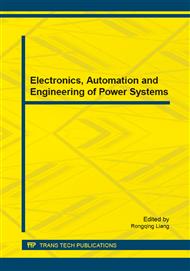p.118
p.125
p.131
p.138
p.147
p.153
p.157
p.161
p.168
Adaptive Tracking Control without Image Velocity Measurement
Abstract:
This paper presents a adaptive controller for visual servoing systems to allow the tracking of a 2D reference trajectory without using image velocity measurements when the kinematics and dynamics parameters are uncertain. To avoid performance decaying caused by measurement errors of the image velocity, we proposed the adaptive controller, with which image velocity need not be directly measured. The first derivative of designed sliding mode vector is not affected by actual image speed. The parameter estimation of image position is used to replace the parameter estimation of image speed. We removed the filter structure in controller, which is used to predict the image velocity. The method makes the controller structure is simpler and more reliable, and reduces the difficulty of project implementation and tuning parameters. The asymptotic stability of the system is proved by using the Lyapunov’s method. Simulation results show that the SCARA robot end effector is able to converge to a desired trajectory.
Info:
Periodical:
Pages:
147-152
Citation:
Online since:
February 2015
Authors:
Keywords:
Price:
Сopyright:
© 2015 Trans Tech Publications Ltd. All Rights Reserved
Share:
Citation:


